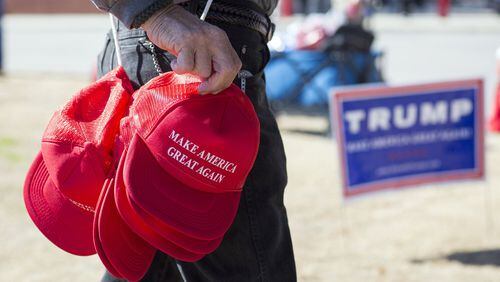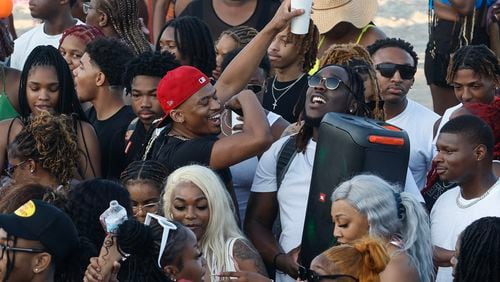Whatever you think of him, Donald Trump has irrevocably altered America. That includes education, and not just by putting Betsy DeVos in charge of it.
He has also changed the experience of education.
I’m a senior at Wheeler High School in east Cobb. Over the past year, I’ve seen a shift in how kids interact. Everything has become more tense – between liberals and conservatives, between races, genders and religions.
Amongst minorities, a focal point of bitterness has become those who paraded the hallways in victory after Trump’s win. And in the year since his inauguration, something unsettling has been building among many young minorities who are fed up with Donald Trump:
Some of us are learning not to trust white people.
“Him being president has shown a lot of true colors of the white people around me,” Destiny Gossett, a black junior at my school told me by text. “Like them publicly agreeing with him, or wearing ‘Make America Great Again’ stuff.”
Those in the four-year age range that fill high schools only experienced two presidents before Trump. There was Bush, who we were too young to pay attention to, then Obama, a black president who is Trump’s polar opposite in every imaginable way.
During the Obama years, a sense of unity pervaded my school, which is 73 percent minority and 45 percent female. Kids of all different backgrounds sat together at lunch. We participated in after-school programs and clubs together. When I went to parties, I found diversity.
I was lucky enough to grow up during these years. I’m not saying things were perfect. Racism, sexism, homophobia and xenophobia existed, but they seemed to be in the recesses of our minds.
Tensions bubbled up as the 2016 election season slugged along. Trump spoke disparagingly of Hispanics; white people cheered as black people were attacked at Trump rallies.
In my world, divisions emerged.
At school the morning after the election, Trump supporters in red hats and MAGA shirts – exclusively white, mostly male – radiated arrogance. Clinton supporters walked the halls with heads bowed in anguish. Tensions boiled.
Our principal appeared on the school’s morning news broadcast to remind us that all elections ended with happy and unhappy people, and it was important to “keep a level head” about things. Clearly, he saw landmines ahead.
But the fact that the principal had to address the student body in such a way – as if addressing an epidemic of school fights or conduct infractions – spoke volumes about what this election meant for our future.
Where we once engaged each other in minor bickering over political opinions, now we realigned into cliques, mostly along racial lines, eyeing others with cold detachment.
Little things started to add up.
We always swapped racial jokes, but now they were less in jest and more for offense. Self-segregation amped up in the cafeteria. Both white and black students uttered racial slurs once thought off limits.
Over time – as we lived through Charlottesville, the dog-whistle cabinet appointments, the callousness toward Puerto Rico – I noticed more black, Hispanic and Asian students talking about “how white people are.”
“People were already standoffish towards white people anyways,” Destiny, the junior at my high school, said, “and their public actions on news outlets and social media just make it worse.”
Alex Robinson, a black senior at Chapel Hill High School in Douglas County, remembers a pre-Trump incident that became a harbinger of things to come.
“I remember a couple years ago a group of white people came to Douglasville waving around Confederate flags on their trucks and terrorizing a little black kid’s birthday party,” he told me in a text message. “If constant negative images of white people keep being shown on the news then we will begin to form even more negative stereotypes.”
At lunch one day, I saw a white football player start to sit down with a group of black athletes. One of the athletes looked up and shouted, “Nah, you’re supposed to sit over there, right?”
I’d never seen anything like that happen.
I asked Renata Santos, a senior at my school whose parents immigrated from Brazil, about anti-white sentiments among Hispanics. She was blunt: “They have a valid reason.”
For whites, it hurts being put on the defensive.
A senior at Westlake High School, August Wilson, supported Trump during the election but says he has since changed his mind.
“I didn’t know that things would get this bad with him,” August said. “(Trump) is giving white people a bad rep, kind of, but I think people also should be mindful that all of us aren’t like that.”
As for me, I just want us all to keep talking. Trump won’t be in charge forever. My suspicion is he’ll be like the flu: really hard to take, but ultimately survivable.
About the Author






